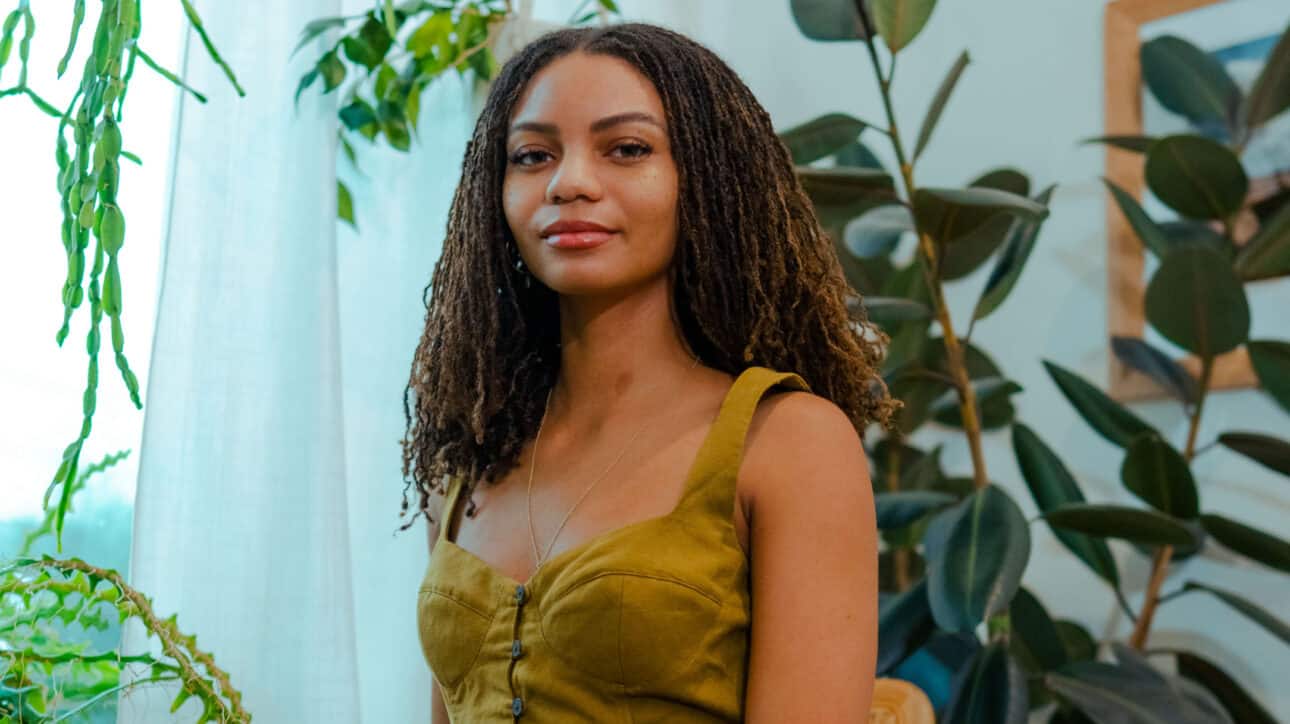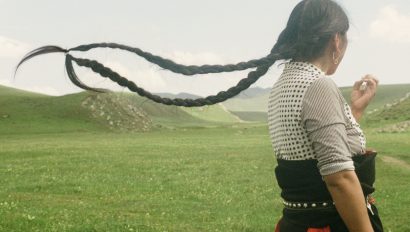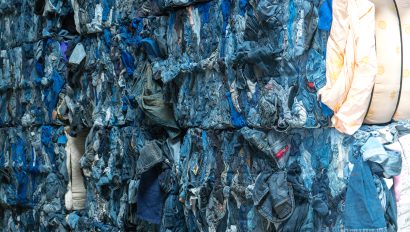Radically Imagining a More Just Future for Climate Action with Intersectional Environmentalist

Intersectional Environmentalist (IE) is building a new reality for environmental education: one that centers front-line voices and helps people with intersectional identities find hope in the environmental movement.
Led by a powerful trio of women of color, the organization was founded in 2020 to highlight how social justice is, and must be recognized as, intersectional with environmentalism. Acknowledging that those most impacted by the climate crisis are the least responsible, IE aims to bring their perspectives into the conversation and ensure that co-creation is embedded in solutions.
Together, Leah Thomas, the founder of IE, and Kiana Kazemi, co-director of the organization, spoke about the importance of representation in leadership, illustrating how bringing a diversity of voices into the climate conversation is fundamental to driving change.
Kiana Kazemi: Leah, it’s been almost three years since the founding of IE. We’ve built everything from a podcast to a magazine, and now we’re hosting climate concerts and handing out books for free like Oprah, where everybody gets a book! All in an effort to radically re-imagine and pave new paths for environmental education, policy, and movements. Can you tell me a little more about IE’s mission that we’ve honed in over the years?
Leah Thomas: It’s been a pleasure working together. As you know, Intersectional Environmentalist (IE) is a Black-founded and women-of-color-led environmental justice education and awareness organization that has become a leading resource for content and programs that explore environment, culture and identity.
Environmental justice education is absent from many environmental science and STEM curriculums in the US from primary education to universities and beyond; which we believe is a large factor in the lack of funding for grassroots environmental justice and for more action and support. We want to shift environmental education, movements and policy to center environmental justice and the importance of equity in these spaces, to ensure a better and safer future for all people, especially those most impacted by the climate crisis.
“We want to shift environmental education, movements and policy to center environmental justice and the importance of equity in these spaces, to ensure a better and safer future for all people, especially those most impacted by the climate crisis.”
Kiana Kazemi: Landing on our mission and theory of change has definitely been a beautiful journey of team collaboration and community learnings along the way. It’s amazing to think back to that first post that led to IE’s origins, calling for the mainstream environmental movement to acknowledge the intersection of social justice with environmentalism. Since then “intersectional environmentalism” has become common terminology within the sustainability space, which we never expected! Why is it so critical that we go beyond looking at climate in isolation and consider social justice too?
Leah Thomas: Those most impacted by the climate crisis are the least responsible. Those bearing the brunt of environmental injustice are Black, Indigenous, and people of color as well as lower-income, disabled, and communities in the Global South. Race, income and ability are leading factors in who experiences climate injustice, so they can’t be left out of the conversation. Doing so is detrimental to their livelihoods. As long as this inequity persists, we must not look at climate in isolation.
Kiana Kazemi: Having conversations around the intersection of climate and social justice is so important, but we can’t stop at that. One of my favorite things about the team we’ve built at IE is our BIPOC women leadership, and how that has translated into the transformational work we’re able to do in helping to build diverse workspaces, campus cultures, and movements. I’m curious about what your experience has been with representation in leadership structures and why it’s so important.
Leah Thomas: Just like the earth and ecosystems thrive on biodiversity, so does the sustainability industry as a whole and leadership structures. When there are more perspectives in a room, with unique backgrounds, tackling sustainability issues can become more holistic and collaborative. We all bring such unique experiences to the table that inform how we assess and analyze sustainability and the prisms in which we see it. When we team up together, respecting and acknowledging the beauty in these differences, we can co-create new solutions to the climate crisis and create more sustainable businesses, organizations, and policies.
“Just like the earth and ecosystems thrive on biodiversity, so does the sustainability industry as a whole and leadership structures. When there are more perspectives in a room, with unique backgrounds, tackling sustainability issues can become more holistic and collaborative.”
Kiana, with the programs you create at IE, you always ensure we partner with local people of color-led environmental justice initiatives, professors, and more. Why is it so important that historically excluded voices are represented in not only our programming but in the climate conversation as a whole?
Kiana Kazemi: We have everything to gain and little to lose from collaboration and coalition building, which is why all our programs have community at their core. For example, in early 2022 we launched a program called the IE Contributor’s Network, which creates space for anyone in our community to submit their research, story, or artwork to be published on our platform, and get paid for it. Additionally, when showing up across the country for our in-person events, we partner with local grassroots organizations to share local stories of resilience, climate organizing, and resistance. By including these voices in our programs, we’re empowering historically silenced voices to share their climate solutions, and help our audience connect to the initiatives they care about.
“When you have a platform to do so, no matter how big or small, including marginalized voices in environmental programs, initiatives and storytelling helps address and correct a historic lack of inclusion and pave a brighter future.”
Leah Thomas: While we’re a non-profit, we consult with businesses in every sector from fashion to technology to food and beverage and beyond to reshape their sustainability strategies to be rooted in diversity, justice, and inclusion. Companies can get started by getting familiar with environmental injustice in their surrounding communities and even the stories surrounding their suppliers across the globe. Getting to know the issues and the organizations that are fighting to correct these issues, becoming their partners and a strong support system to their efforts, is one of the best ways companies can do better.
Many environmental justice organizations have solutions in mind but are in need of amplification and resources to carry out those solutions, which is the perfect way for companies to partner with these initiatives.
Kiana Kazemi: I couldn’t agree more, and I’m really excited to see companies take on more responsibility in these arenas in the future.


